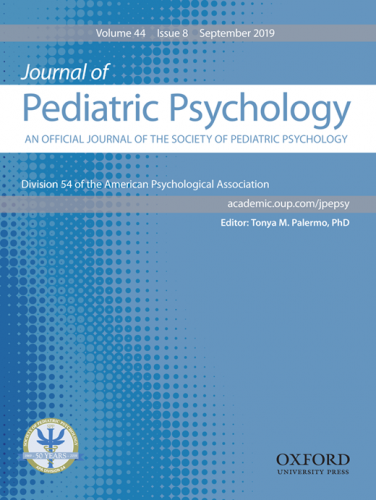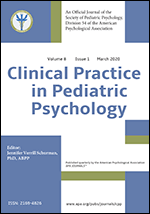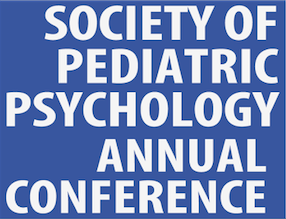Fact Sheet: Atopic Dermatitis
Atopic dermatitis (AD), the most common type of eczema, is a chronic skin condition characterized by dry inflamed skin with intense itch. AD pathogenesis involves genetic predisposition, immunological factors, skin barrier dysfunction, and environmental triggers (allergens, irritants). Scratching exacerbates AD by causing further damage to the skin barrier and maintaining inflammation, which leads to further scratching (“itch-scratch cycle”). Patients are at increased risk for skin infection.
Prevalence and Course
AD is the most prevalent skin disorder in the pediatric population, affecting 10 to 20% of chldren. The prevalance of AD decreases as children get older, but individuals with symptoms persisting beyond early childhood tend to have more severe disease. There is no cure for AD, but treatments can help achieve symptom control. Treatment involves skin hydration (frequent moisturizer use and baths/showers), use of topical anti-inflammatory medications (e.g., topical steroids), anti-bacterial measures, managing itch, and trigger avoidance. Inpatient hospitalization is required in some cases.
Health and Psychosocial Consequences
Itch and sleep disruption (due to scratcing as well as circadian rhythm regulation of the immune system and skin physiology) significantly impact quality of life. Skin pain may also be present. Children and adolescents may face social stigma and bullying due to the rash and are at elevated risk for attention-deficit/hyperactivity disorder, anxiety, depression, and autism spectrum disorder. This risk is greatest for those with severe disease and may be mediated by sleep disruption. Stress exacerbates AD through pro-inflammatory mechanisms that increase itch.
Evidence-based Assessment
Key domains of assessment include knowledge of AD and its management, treatment adherence, parent-child collaboration in AD care, sleep problems, itch-scratch triggers, school and social functioning, self-esteem, mental health conditions, and family stress. Common barriers to adherence include complexity/intensity of the skincare plan, fears about topical steroid use, financial burden, and child anticipatory anxiety about skincare, including treatment-related pain. Validated child- and parent-report quality of life measures are available.
Evidence-based Interventions
Randomized controlled trials are limited, but psychological interventions such as relaxation training, habit reversal, and cognitive-behavioral strategies to manage stress and cope with itch have shown promise in reducing itch intensity, scratching and disease severity. Although sleep often improves with effective skincare, psychological interventions to promote good sleep hygiene and treat insomnia are important in facilitating this process. Family-based behavioral strategies may be helpful in optimizing adherence and reinforcing positive coping.
Culture, Diversity, Demographic and Developmental Factors
Although children from all racial and ethnic backgrounds can develop AD, worldwide the condition is more common among black and Asian individuals. In the United States, increased AD severity has been associated with older child age, African American race, Hispanic ethnicity, and lower socioeconomic status. Hospital readmission rates are higher for patients with lower income.
Resources
- National Eczema Association. NEA is a patient-oriented non-profit organization with a mission to improve the health and quality of life for people with eczema through research, support, and education. NEA offers information and resources to help manage and cope with eczema through its website, printed materials, webinars, conferences, and online support. NEA is guided by a scientific advisory committee.
Author List: Jennifer LeBovidge, PhD, Nancy Rotter, PhD, Catherine Peterson, PhD, Linda Herbert, PhD
Date of Last Update: September, 2019
References
- Chang, Y. S., & Chiang, B. L. (2018). Sleep disorders and atopic dermatitis: A 2-way street? J Allergy Clin Immunol, 142(4), 1033-1040. doi:10.1016/j.jaci.2018.08.005
- Chida, Y., Steptoe, A., Hirakawa, N., Sudo, N., & Kubo, C. (2007). The effects of psychological intervention on atopic dermatitis. A systematic review and meta-analysis. Int Arch Allergy Immunol, 144(1), 1-9. doi:10.1159/000101940
- Eichenfield, L. F., Tom, W. L., Berger, T. G., Krol, A., Paller, A. S., Schwarzenberger, K., . . . Sidbury, R. (2014). Guidelines of care for the management of atopic dermatitis: section 2. Management and treatment of atopic dermatitis with topical therapies. J Am Acad Dermatol, 71(1), 116-132. doi:10.1016/j.jaad.2014.03.023
- Eichenfield, L. F., Tom, W. L., Chamlin, S. L., Feldman, S. R., Hanifin, J. M., Simpson, E. L., . . . Sidbury, R. (2014). Guidelines of care for the management of atopic dermatitis: section 1. Diagnosis and assessment of atopic dermatitis. J Am Acad Dermatol, 70(2), 338-351. doi:10.1016/j.jaad.2013.10.010
- Klinnert, M. D., Booster, G., Copeland, M., Darr, J. M., Meltzer, L. J., Miller, M., . . . Bender, B. G. (2018). Role of behavioral health in management of pediatric atopic dermatitis. Ann Allergy Asthma Immunol, 120(1), 42-48.e48. doi:10.1016/j.anai.2017.10.023
- LeBovidge, J. S., Elverson, W., Timmons, K. G., Hawryluk, E. B., Rea, C., Lee, M., & Schneider, L. C. (2016). Multidisciplinary interventions in the management of atopic dermatitis. J Allergy Clin Immunol, 138(2), 325-334. doi:10.1016/j.jaci.2016.04.003
- Noren, P., Hagstromer, L., Alimohammadi, M., & Melin, L. (2018). The positive effects of habit reversal treatment of scratching in children with atopic dermatitis: a randomized controlled study. Br J Dermatol, 178(3), 665-673. doi:10.1111/bjd.16009
- Vakharia, P. P., Chopra, R., Sacotte, R., Patel, K. R., Singam, V., Patel, N., . . . Silverberg, J. I. (2017). Burden of skin pain in atopic dermatitis. Ann Allergy Asthma Immunol, 119(6), 548-552.e543. doi:10.1016/j.anai.2017.09.076
- Yaghmaie, P., Koudelka, C. W., & Simpson, E. L. (2013). Mental health comorbidity in patients with atopic dermatitis. J Allergy Clin Immunol, 131(2), 428-433. doi:10.1016/j.jaci.2012.10.041



